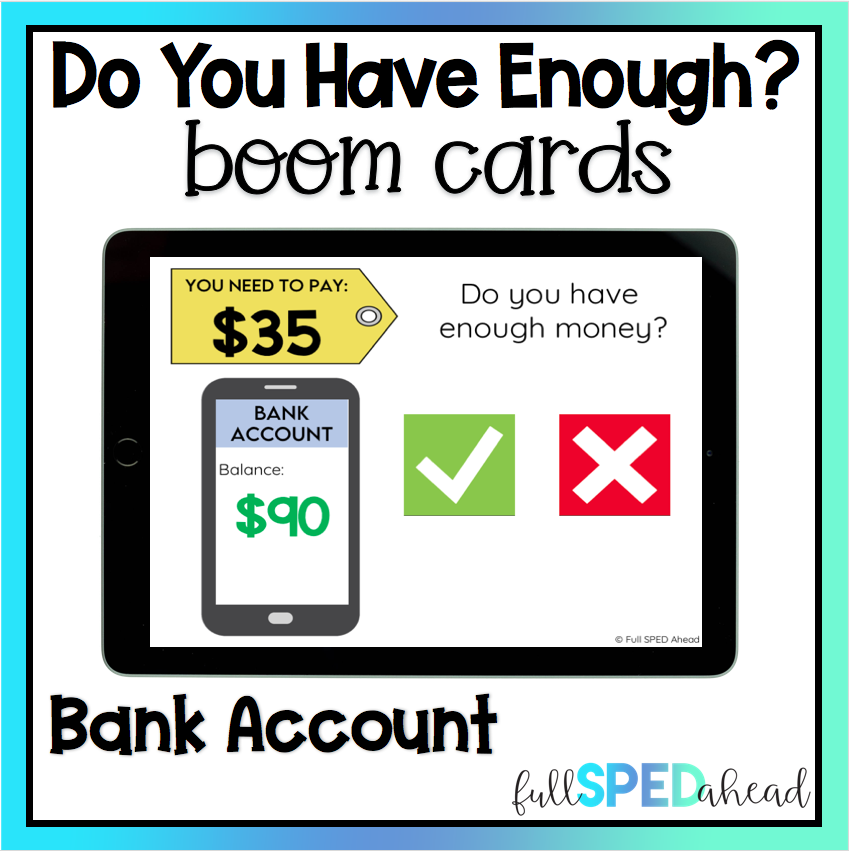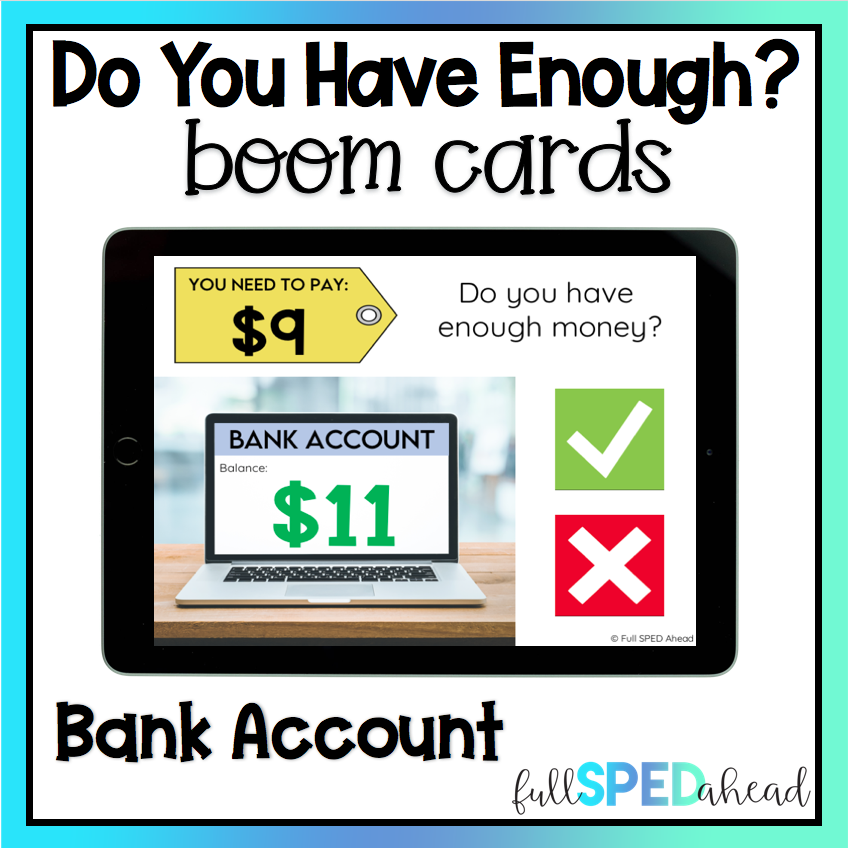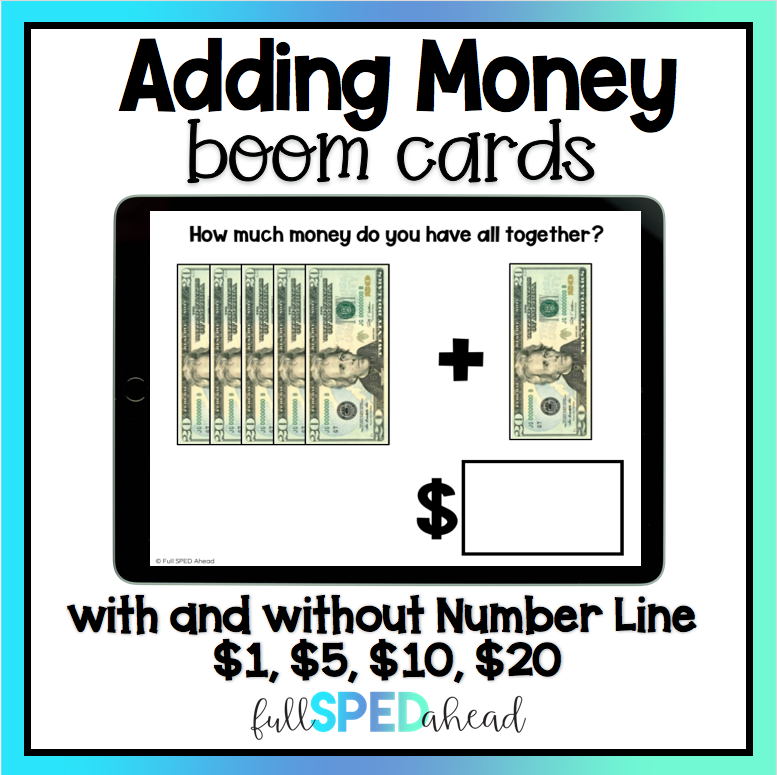Budgeting and money management is one of my very favorite skills to teach in special education. We use money every day and it is so meaningful for our students to have this experience as well.
From understanding if you have enough to make a payment, and knowing how to add and count money – our students need more exposure to how to manage their money. I also work with my students to read their bank accounts and know how to use a credit or debit card.
Creating interactive, digital resources that incorporate functional skills is so important, especially for my students. I need them to help my students master and maintain important money math skills in their future lives. They may not be able to access their own bank account right now, but in the future, they will!
In today’s society, financial literacy and money management skills are crucial for individuals of all abilities. For special education students, learning about budgeting and money management can be empowering and help prepare them for independent living and financial success. By providing them with the necessary tools and strategies, educators can help special education students develop practical skills to make informed financial decisions and achieve greater financial independence. In this blog post, we will explore the importance of teaching budgeting and money management to special education students and provide practical tips and strategies for effective instruction.
Grab this FREEBIE for students working on managing their bank accounts:

This past year we have been unable to take community trips to practice our budgeting and money management skills, which is why interactive digital resources and activities are the next best thing. Students can simulate buying and paying for items with and without their debit cards!
You can use these activities directly in your classroom without the need to go anywhere! Another great way to practice this skill is by creating a school store to purchase items with money or card! Are you looking to help your students continue to build these skills digitally? You’re in luck. This resource bundle I have created includes Interactive Boom Cards!

Start by introducing the concept of money and its value. Teach students how different denominations represent varying amounts and how to count and handle money accurately. Utilize visual aids, such as play money or interactive apps, to engage students in hands-on learning experiences.

Guide students in creating simple budgets that align with their needs and wants. Teach them how to differentiate between needs and wants, set financial goals, and allocate funds accordingly. Provide real-life examples and scenarios to help students understand the concept of budgeting in practical terms.
Introduce students to the importance of tracking and recording their expenses. Teach them how to use tools like expense logs or mobile apps to record their purchases and track their spending habits. Encourage regular review of their records to promote reflection and awareness of their financial choices.
Teach students about making wise financial decisions by comparing prices, identifying sales and discounts, and considering the value and quality of products or services. Help them develop critical thinking skills to avoid impulsive purchases and understand the consequences of their financial choices.
Incorporate real-life scenarios and activities into the curriculum to reinforce money management skills. For example, simulate grocery shopping or create a classroom store where students can practice making purchases, calculating totals, and receiving change. These hands-on experiences enhance their understanding and application of budgeting skills.
Emphasize problem-solving skills by introducing unexpected financial situations and challenges. Encourage students to brainstorm and find creative solutions to manage their finances effectively. Teach them to adapt their budgets when circumstances change or unexpected expenses arise.
Foster collaboration among students by engaging them in group activities related to budgeting and money management. Explore opportunities to connect with local businesses, banks, or financial institutions that offer educational resources or guest speakers to share practical insights and experiences.
Teaching budgeting and money management to special education students equips them with essential life skills for financial independence. By providing practical and meaningful instruction, educators can empower students to make informed financial decisions, set and achieve financial goals, and navigate the complex world of personal finance. Through ongoing support, encouragement, and real-life applications, we can help our special education students build a solid foundation for a financially secure future.
To read more about money and students, read this post!
What are you looking for?
COPYRIGHT © 2025 Full SPED Ahead